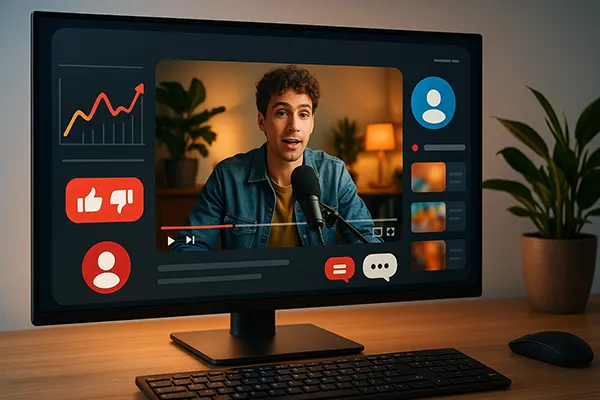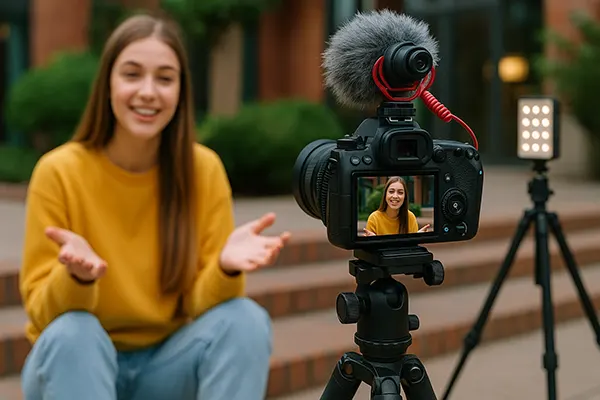Ranking Algorithms on YouTube in 2025: Retention and Interactive Elements

YouTube’s recommendation system continues to evolve in 2025, making it vital for content creators and marketers to understand what truly influences visibility and engagement. With an emphasis on viewer satisfaction and transparency, YouTube’s algorithm has shifted towards prioritising retention time and interactive features over traditional metrics like views and clicks. This article explores how these modern ranking signals function and what strategies professionals can implement to improve discoverability and audience loyalty.
Viewer Retention as a Core Ranking Metric
Retention time remains the most decisive factor in 2025. YouTube’s algorithm interprets high retention as a sign of quality and relevance, preferring videos that keep viewers engaged for a longer duration. Videos with steep drop-off rates within the first 30 seconds are often demoted in recommendations and search results, while those that maintain interest until the end are pushed forward.
The platform now measures retention not only in terms of percentage watched but also in absolute minutes, with a strong bias toward longer content that sustains attention. This favours videos with strong narrative structure, consistent pacing, and high production value. Channels producing informative or entertainment-rich long-form content see higher organic traffic as a result.
Content creators must also monitor segmented retention graphs available through YouTube Studio analytics. These graphs indicate precisely where viewers abandon a video, offering a roadmap for structural adjustments, scripting changes, or repositioning call-to-action elements to maximise completion rates.
Tips for Improving Retention in 2025
To enhance viewer retention, creators are advised to hook attention within the first 10 seconds using direct, value-oriented intros. Avoid prolonged title sequences or vague openings. Instead, introduce the topic and set expectations clearly right away.
Segmenting content with visual markers, jump cuts, and clear transitions helps sustain viewer interest. This is especially crucial for educational or how-to videos, where mental fatigue can set in quickly. Additionally, maintaining consistent tone and energy throughout a video reduces the likelihood of mid-watch drop-offs.
Closing segments should reinforce viewer investment with compelling summaries or previews of what comes next on the channel. This not only supports retention but also increases the likelihood of the viewer subscribing or watching another video immediately.
Rise of Interactive Elements in Discoverability
Interactive elements such as polls, end screens, community posts, and live chat replays have become vital in influencing ranking and visibility. YouTube’s 2025 algorithm integrates engagement quality with algorithmic favourability, recognising that interactive features increase both user satisfaction and time on site.
Features like clickable end screens and chapter markers encourage prolonged interaction, allowing users to explore specific parts of a video without skipping blindly. These behavioural signals demonstrate intentional consumption and are weighted more heavily than passive watch time.
Community engagement tools, including Q&A during live streams and pinning viewer comments, serve as extended engagement opportunities that go beyond the initial watch. Channels that actively use these tools are categorised as high-trust, high-engagement entities within the ecosystem.
Strategies for Effective Use of Interactive Tools
Creators should consistently use YouTube’s community tab to post updates, polls, and behind-the-scenes content. These actions not only retain current subscribers but also act as micro-signals that boost channel activity metrics in the algorithm.
In-video prompts that encourage viewers to comment on specific questions or topics drive more meaningful discussion. These interactions signal to YouTube that the video content provokes thought and emotion, a critical factor in personalised recommendations.
End screens and cards should be designed strategically—not as distractions but as paths to similar or sequential content. This internal linking behaviour mimics SEO interlinking, providing continuity in user journeys across the channel’s content library.

Personalisation and Session-Based Ranking Logic
In 2025, YouTube’s algorithm places a significant emphasis on session-based data. Rather than ranking videos based solely on isolated performance, it evaluates how well a piece of content contributes to longer, more valuable user sessions. If a video leads to further video views, subscriptions, or other interactions, it’s deemed beneficial and ranked accordingly.
This session-driven logic discourages clickbait tactics. Misleading thumbnails or titles may secure an initial view, but if they lead to viewer dissatisfaction and early session termination, the algorithm demotes the video and sometimes the entire channel’s visibility.
Channels that establish consistent viewing behaviour—such as weekly series or content blocks—benefit from increased session watch time, which YouTube now treats as a signal of brand loyalty and authority. Videos that regularly initiate long sessions across diverse user types are prioritised in homepage and “Up Next” placements.
Optimising for Session Watch Time
Creators should design their publishing schedules around session initiation. For example, releasing content in connected pairs or thematic series increases the probability of viewers watching multiple videos in one sitting. These compound effects boost the perceived value of the channel as a source of sustained entertainment or education.
Curating playlists with autoplay enabled also supports session-based ranking. Playlists that feature your own videos alongside community favourites or reputable sources can increase retention while signalling relevance within your niche.
Lastly, creators must analyse session start and end patterns using advanced analytics. Knowing which videos spark extended sessions and which ones cause drop-offs allows for content strategies that align with algorithmic preference and user experience expectations alike.
